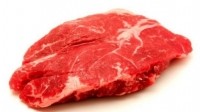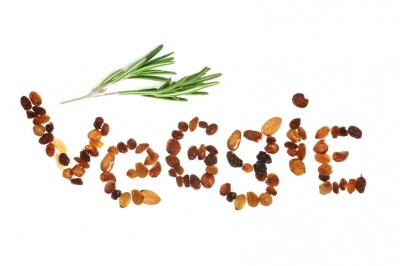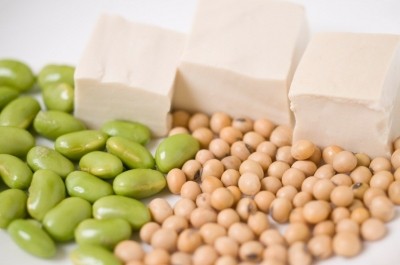COP21: Sustainability in focus
More headaches for "less meat" messaging

Pop a label on a ready meal with ‘reduced sugar’, ‘less fat’, or ‘lower salt’ and the chances are it will catch a shoppers’ eye. Stick ‘less meat’ on it and the reaction will be very different. So how on earth can consumers be encouraged to reduce their consumption of livestock products, specifically red meat?
It’s a question that has been bubbling along for some time but may well boil over in the next couple of weeks as countries meet in Paris to thrash out a post-2020 deal on greenhouse gas emissions (GHGs).
Eating less meat won’t be on the agenda at COP21, which starts today; yet livestock emissions are on a par with those from energy or transport. With any climate deal likely to fall well short of the GHG cuts needed to keep temperature rises within two degrees, sustainable diets will be thrust into the spotlight as an “obvious” solution, according to research published last week by Chatham House.
“Worldwide adoption of a healthy diet [with less meat and more plants] would generate over a quarter of the emission reductions needed by 2050,” said lead researcher Laura Wellesley. It’s a compelling argument and the most the most effective way to achieve this would be a carbon tax on meat, she said.
As Food Navigator reported last week, the public might not be as opposed to this measure as politicians believe. But that doesn’t mean there wouldn’t be a huge backlash: the row that erupted in the US following the “less meat, more plants” advice dished out by the Dietary Guidelines Advisory Committee has given governments a taste of the industry and public ire the ‘nanny state’ approach can create.
Further analysis of Chatham’s detailed polling by FoodNavigator shows that the majority of the 5,048 EU shoppers (58%) are happy with the amount of meat they eat. And whilst 15% said they would eat less if they could, 20% would eat more.
What’s more, asked what they are prepared to do in order to limit their own contribution to climate change, eating less meat and dairy come bottom of the pile (see table). In fact, there’s a greater willingness to fly less than eat less of these carbon-intensive products.
The problem is exacerbated by shoppers’ “very, very low” understanding of the link between what they eat and carbon emissions, explained Glasgow University Media Group’s Dr Catherine Happer.
“There’s a lot of work to be done to help consumers make the connection between meat and climate change,” she said, and environmental issues “are not necessarily
something that will [trigger] behaviour change”.
Putting the message on the packet is a definitely no-no. Just 57% of EU shoppers would find on-pack labelling useful, not that far ahead of social media (46%) and way behind scientists and experts (87%) and even the media (71%).
“Packaging is the last place we should begin the communication,” said Jo Arden, head of strategy at UK-based brand agency 23red. “The messages are too complex and counter-intuitive to be restricted by the space and time available in store.”
Image problem: Cutting meat to cut emissions - or cut costs?
The solution will be to divide and conquer with targeted messaging for different demographics, she added. “Clearly telling a lower income mum that a package of sausages now has less meat because it is better for the environment is going to be harder to swallow, than the same message to a relatively affluent shopper buying an artisan pie.”
A ‘less but better’ message is another option. The reliability of the source (91%) and animal welfare (83%) rank high in the factors EU consumers use to determine how much meat they eat. But health (93%) trumps everything else, bar enjoyment which sits at 95%.
Could a “more healthy” rather than “less meaty” message be the way to go?
“Health messages do tend to hit home harder than environmental ones currently,” said Nick Hughes, food sustainability advisor with WWF-UK. The news that the International Agency for Research on Cancer found consumption of processed meats to be carcinogenic to humans will only fuel this trend.
Hughes was speaking at the launch of a range of sustainable dishes created by catering firm Sodexo for some of its school clients. Up to 25% of the meat content has been shaved from popular meals like beef lasagne and chicken biryani. Most has been achieved at no extra cost.
Hughes said the concept could work in food manufacturing but it wouldn’t be easy. “With the foodservice industry, most food is prepared from scratch so it is more straight-forward to reengineer recipes, whereas ready meals involve more complexities in the production cycle.
“However, there are prepared meals like soups or those with fresh ingredients that can be modified to reduce meat content and increase the proportion of vegetables,” he added.
The other option is to forego meat altogether and look to alternatives. Some of Germany’s largest meat processors are already committing to sell more alternatives. Using meat substitutes in products traditionally associated with meat won’t be to everyone’s liking, but the potential market is huge.
“While we know that there's a growing number of consumers interested in 'flexitarian' eating – there's an awful lot more where it isn't even on their radar,” said Sue Dibb, coordinator of the Eating Better Initiative.
Factors EU shoppers use to decide how much meat they eat (5,048 respondents):
| Important | Not important |
Enjoyment | 95% | 3% |
Health | 93% | 5% |
Safety | 91% | 5% |
Price | 86% | 11% |
Welfare | 83% | 13% |
Environment | 70% | 24% |
Social norm | 63% | 23% |
Changes EU consumers are prepared to make to reduce their environmental impact:
| Driving less | Using less energy | Flying less | Eating less meat | Eating less dairy |
Likely | 34% | 41% | 34% | 37% | 28% |
Unlikely | 24% | 7% | 37% | 45% | 62% |
Net | 10% | 34% | -3% | -9% | -35% |

























